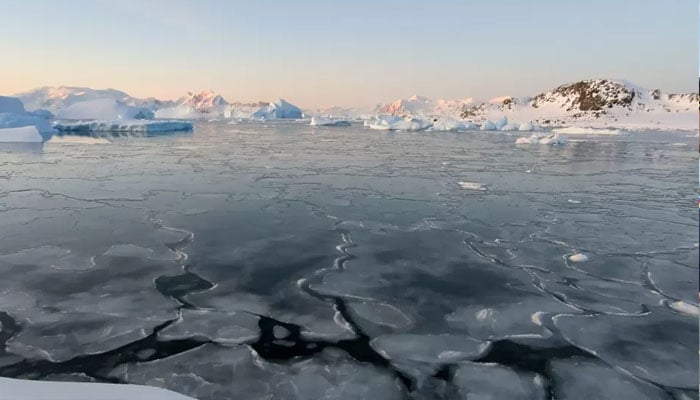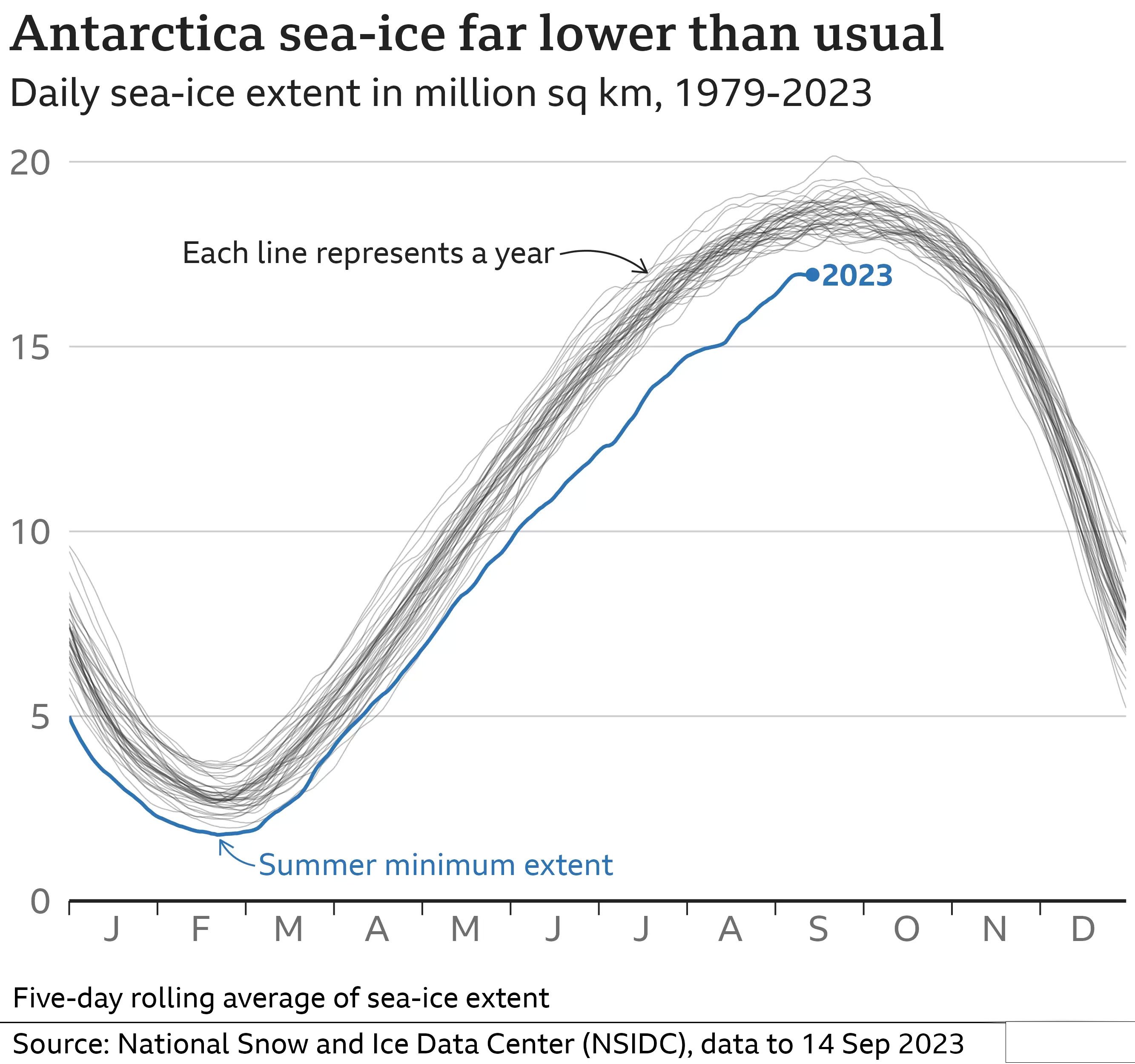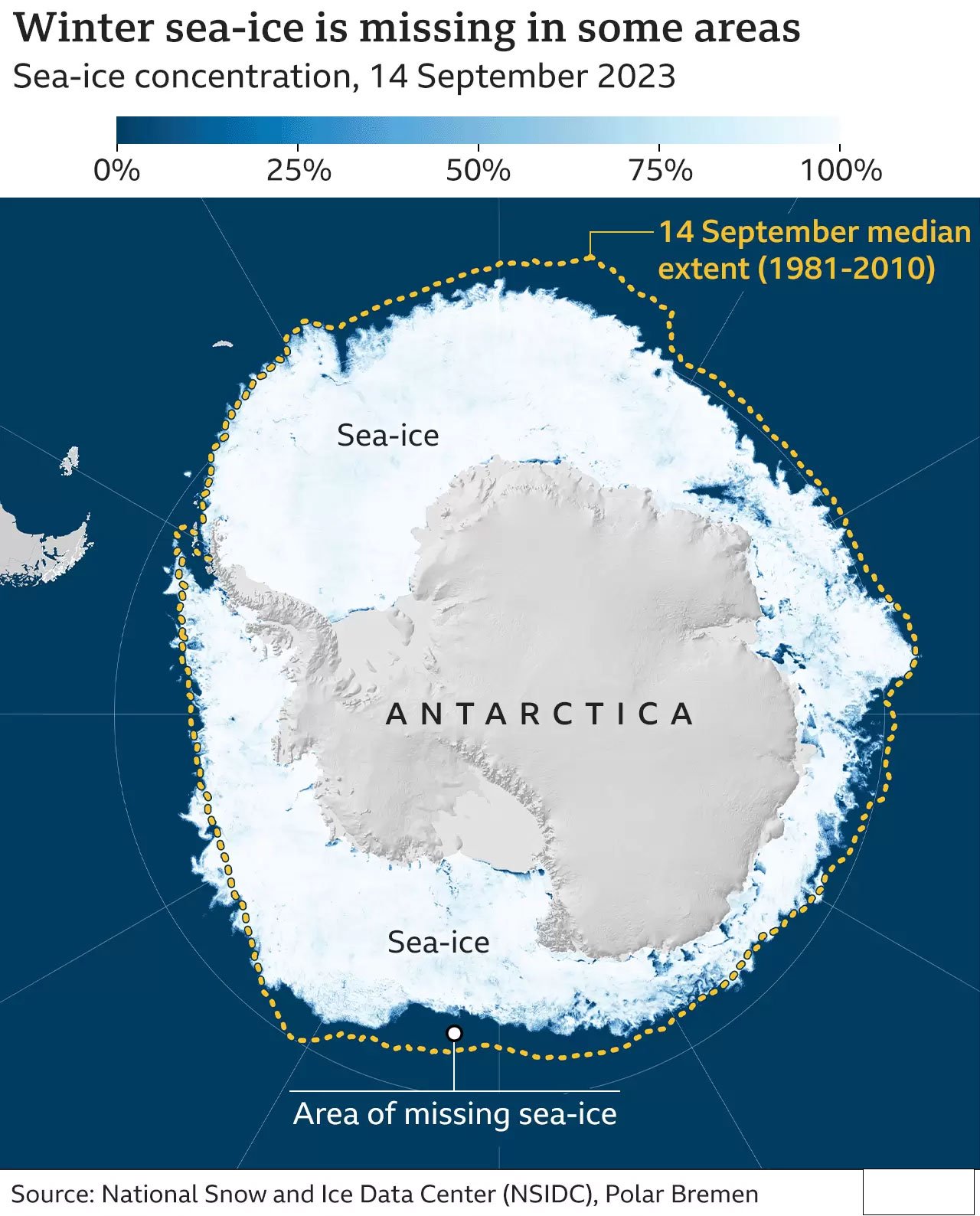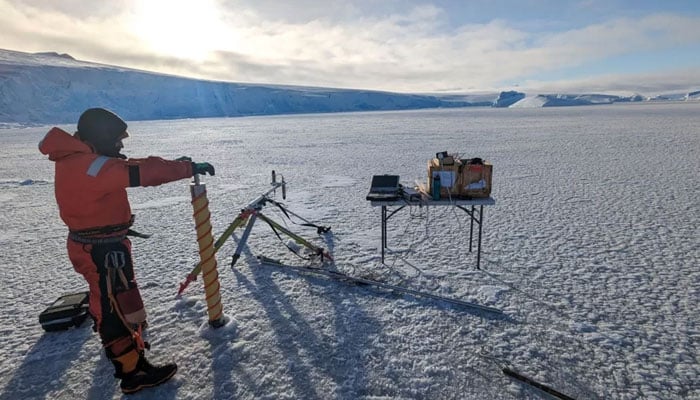How alarmingly low sea-ice in 'resilient' Antarctica is turning earth's refrigerator to oven
Antarctica's reflective white ice bounces solar energy back into atmosphere and cools adjacent waters
September 17, 2023

Antarctica is currently experiencing an unprecedented decline in its sea-ice levels during winter, as revealed by satellite data.
This alarming trend has caught the attention of experts, who previously considered Antarctica resilient to global warming.
Walter Meier, a sea-ice monitoring expert from the National Snow and Ice Data Center, expressed his astonishment, stating, "It's so far outside anything we've seen, it's almost mind-blowing." The repercussions of an unstable Antarctica are extensive, warn polar experts.

Antarctica's vast ice expanse plays a critical role in regulating the Earth's temperature. Its reflective white surface bounces solar energy back into the atmosphere and cools the adjacent waters. Without this ice, Antarctica could shift from being the planet's refrigerator to a heat source, with potentially dire consequences.
The current sea-ice extent on the Antarctic Ocean's surface measures less than 17 million square kilometres, which is 1.5 million square kilometres less than the September average and significantly below previous record lows during winter. To put it in perspective, this missing ice area is approximately five times the size of the British Isles.

Unfortunately, Dr Meier holds little hope for a substantial recovery in sea-ice levels. Scientists are still working to identify all the factors contributing to this year's unprecedented decline, a task made challenging by the historical difficulty of studying trends in Antarctica.
In a year marked by record-breaking global heat and ocean temperatures, some scientists argue that the low sea-ice levels are the critical indicator to monitor.
Dr Robbie Mallet, based on the Antarctic Peninsula at the University of Manitoba, stressed the vulnerability of the situation, as this year's thin sea ice has added further complications to his team's research, which already involves isolation, extreme cold, and powerful winds. He remarked, "There is a risk that it breaks off and drifts out to sea with us on it."

Sea ice forms during Antarctica's winter (March to October) and largely melts during summer. It is an integral part of a complex system that includes icebergs, land ice, and extensive ice shelves protruding from the coast. Sea ice acts as a protective barrier for the land ice and prevents ocean warming.
The consequences of diminishing sea ice may become evident as the season transitions to summer, potentially triggering an unstoppable feedback loop of ice melting. The exposed dark ocean areas absorb sunlight rather than reflecting it, leading to the absorption of heat energy, further melting ice. Scientists refer to this as the ice-albedo effect, and it could significantly contribute to global warming, disrupting Antarctica's role as a global temperature regulator.
Prof. Anna Hogg, an Earth scientist at the University of Leeds, indicates that the loss of land ice from Antarctica since the 1990s has already contributed to a sea-level rise of 7.2mm.
Even modest increases in sea levels can result in dangerous storm surges that could devastate coastal communities worldwide. The situation in Antarctica appears to be moving towards the worst-case scenarios predicted by scientists.
Antarctica, being a self-contained continent surrounded by water, has its own unique weather and climate system. Until 2016, the winter sea ice in Antarctica had been expanding in size. However, in March 2022, an extreme heatwave hit East Antarctica, pushing temperatures to -10C when they should have been closer to -50C.
Scientists are striving to unravel the causes behind the vanishing winter sea ice, considering factors like record-warm oceans this year, changes in ocean currents, wind patterns influencing Antarctic temperatures, and the possible influence of the developing El Niño weather phenomenon in the Pacific.
Dr Mallet concludes with a note of concern, stating that there are "very, very good reasons to be worried" about this emerging sign of Antarctic climate change, which has not been observed in the past four decades and is only now coming to light.









